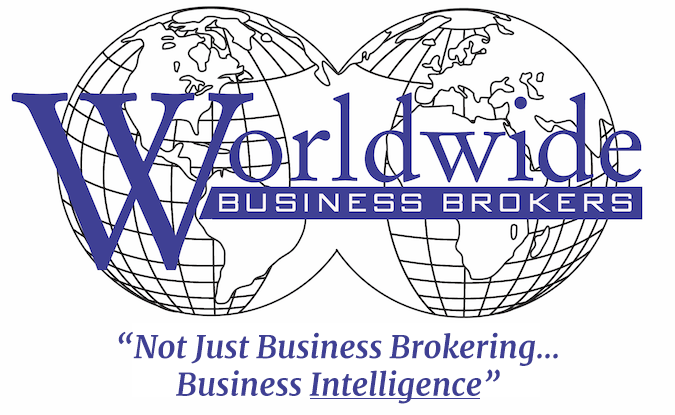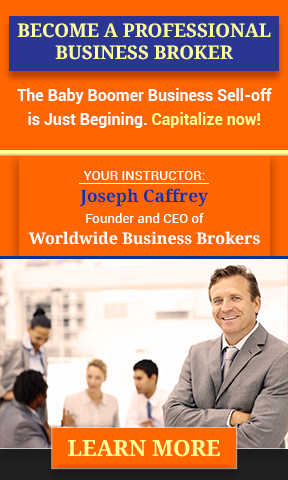Value Drivers: What Drives the Value of a Business?
Businesses derive their value from many of their operational, marketing and financial aspects. These aspects are referred to as “value drivers” and there can be a dozen, multiple dozen or even more. Let’s take a look at a few of the most significant ones.
Value Driver #1: Financial Performance
Needless to say, the financial performance of a business is one of the most important drivers of a business’ value and, although a buyer will consider many additional aspects of the business, this is arguably the most important one to that buyer. “Financial performance” can include many metrics that are sometimes considered value drivers in and of themselves. (Examples are numbers 2 and 4 below.)
 Simple business valuations look primarily at the “true net” or what we refer to as discretionary earnings. This is where most buyers will start as they begin their due diligence. But as more in-depth analysis is performed, the buyers and their advisors will look at growth trends for both revenue and net, expense ratios, inventory controls, payroll growth and productivity, and more. A seller would be wise to make this task as easy as possible, which brings me to the second part of this value driver: the books.
Simple business valuations look primarily at the “true net” or what we refer to as discretionary earnings. This is where most buyers will start as they begin their due diligence. But as more in-depth analysis is performed, the buyers and their advisors will look at growth trends for both revenue and net, expense ratios, inventory controls, payroll growth and productivity, and more. A seller would be wise to make this task as easy as possible, which brings me to the second part of this value driver: the books.
Complete, thorough and orderly financial records are critical to the sale of any business and are most likely to result in a higher valuation being placed on that business. If a business’ books are transparent and easily understood, they will give a buyer and its advisors a sense of both clarity and comfort insofar as orderly books suggest that there are no hidden surprises.
Value Driver #2: Growth Potential
How likely is the business to grow in the future and at what rate?
Look at the business’ financial performance over the past few years. Has the business been growing steadily? Assuming it has, at what rate? Has that rate of growth been equal to the rate of growth in the general economy? If so, the business will not derive much of a value premium from its historical growth. If the business has been growing faster than the general economy, however, it there’s a good chance that it will enjoy a value premium, possibly a handsome one. (If, heaven forefend, the business is not growing at all, a buyer or other analyst will discount its value by some arbitrary number.)
Focus on revenue and discretionary earnings – what comes in the door and what the business generates for the owners. Five percent annual growth in a 1.9% economy is attractive. Ten percent is better. An upward trend is best! The higher the business’ rate of growth over that of the general economy, the higher “growth premium” will likely be applied to the business’ value.
Value Driver #3: Dependency
If a business is dependent on one or two employees, customers or suppliers, the value of each of those to the business is very high because if any one of them is lost, the business will almost certainly suffer. However, the value of the business will suffer because of the presumed risk that such dependence adds to the business’ long term viability.
For example, if the major percentage of a business’ revenue is derived from a government contract, a buyer will reasonably fear that any change in the government agency that is buying the business’ products or services or the budgeting process of the buyer could have a major deleterious effect on the business’ financial performance or even its continued viability as a going concern. If a business relies on one key employee, what is the risk to the business if that employee becomes ill, is recruited away or wins the lotto and retires to Tenerif to drink Mai Tais on the beach?
And what about a business’ suppliers? If there is only one or two and something happens – change of ownership, bankruptcy, environmental infraction, lawsuit to name a few possibilities – how will that affect the business? This factors into the business’ value.
Value Driver #4: Margins
The higher the profit margin enjoyed by the business, the better chance of it receiving a “margin premium” when a buyer or analyst places a value on it. Many small business owners don’t even know their margins!
At its core, gross profit margin is a measurement of a company’s operational efficiency during the production or acquisition process. It is  the percentage of revenue/sales remaining after subtracting the cost of goods sold; the amount of money left over to pay selling, general, and administrative expenses such as salaries, research and development, and marketing.
the percentage of revenue/sales remaining after subtracting the cost of goods sold; the amount of money left over to pay selling, general, and administrative expenses such as salaries, research and development, and marketing.
Many people confuse “mark up” with “margin”. A business’ profit margin is generally the difference between the sale price of a product and the cost to either manufacture or acquire that product, expressed as a percentage. For example, if a business is selling widgets for $10.00 and those widgets cost the business $5.00, the remaining $5.00 – gross profit – represents 50% of the sales price. Though the mark up is 100%, the margin is 50%. If the company bought widgets for $3.00 and sold them for $10.00, the $7.00 difference represents 70% of the sale price and, thus, the margin would be 70%.
Determining a profit margin is essentially calculating the difference between the gross sales and cost of goods sold.
On a larger scale, let’s assume a business has $2.45 million in sales and the cost of goods sold is $1.35 million. The gross profit – that is, the amount of money left over for all other business expenses – is $1.1 million. Dividing this $1.1 million (gross profit) by $2.45 million (gross sales) results in a profit margin of 45%.
Service firms often have higher margins than retailers or manufactures simply because their cost of goods sold is almost non-existent. All else being equal, the higher the gross profit margin, the more valuable the business.
Value Driver #5: Recurring Revenue
Recurring revenue is defined as predictable revenue that can be expected to continue in the future. However, some types of recurring revenue are more valuable than others. Here are some examples of the most valuable types of recurring revenue:
- Contract Revenue. Think of your cell phone. Verizon or AT&T generally sell their wireless services using contracts of one to three years. When a customer walks out with a new iPhone, whoever is providing the service (AT&T, Verizon, etc. received not only the one-time revenue from the sale of the phone but also guaranteed recurring revenue for the next 12 to 36 months. One sale and the money rolls in for the next couple of years! Try doing THAT will a pizza franchise!
- Subscriptions that Auto-Renew. Do you pay Google a couple of bucks a month to store all your email? I do. And how about iCloud, Microsoft One Drive, Amazon Web Services and the many other cloud storage services? Most of these and similar services generate what’s referred to as “evergreen” revenue; revenue that is most likely to go on and on and on. The many wine clubs that have sprouted over the past few years are another example. Once you become a member, you will receive additional shipments of wine on a regular basis until you proactively cancel your subscription or check in to a detox center (just kidding about that last one). Dollar Shave Club is another great example.
- Sunk Money Consumables. The Keurig coffee making system is a perfect example of this. You invest in the machine and are then constantly buying the coffee pods. (We’re officially Keurig Kreatures at Chez Caffrey and at our respective offices.)
There are many other value drivers that impact the value of most businesses. In fact, I’ll send you a three-page discussion of 10 more of them for free. Simply send me your email address (below) and they’ll be delivered to your inbox.
If you have any questions, comments or feedback, I want to hear from you. Put them in the Comments box below. I’ll get back to you with answers or my own comments. If I get enough on one topic, I’ll address them in a future post or podcast.
I’ll be back with you again next Monday. In the meantime, I hope you have a profitable week!
Joe
The author holds a certification from the International Business Brokers Association (IBBA) as a Certified Business Intermediary (CBI) and can be reached at jo*@*******************og.com

